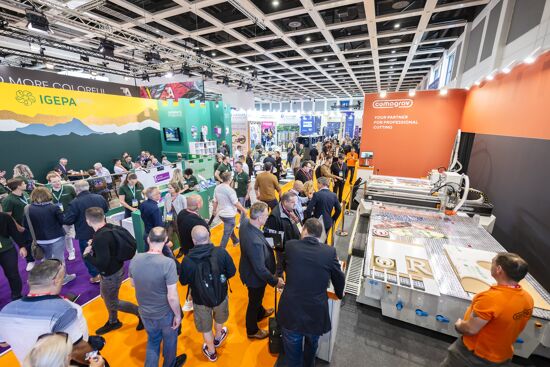Sustainability by design

Laurel Brunner discusses how brands can improve their environmental impact by creating sustainable designs.
All the talk about building circular economies can seem very remote from the day to day realities of living life and work’s daily grind. It’s easy to think of creating a circular economy as someone else’s gig. But that is too convenient and ultimately a little lazy because, as we know, everyone can make a difference even if it is only a very small one. In the graphics industry making a difference starts with design and being aware of how design decisions play out in the context of environmental impact.
Sustainable design starts with being aware of print production processes and thinking about the extent to which design concepts and goals are made real in print or on screen. For instance what works on screen, such as lots of moody shadows will likely use a lot of ink in print. If its printed on paper , this means it will also require specialised processes to deink the material in order to recycle it.
Consider the resources used to create the printed product, starting with the type of substrate with recycled paper the most desirable option. Inks, energy, the print process itself, water, solvents, transport and packaging should all be part of the design and planning processes. If you’re producing a static data piece that will be mailed all over the world, think especially carefully about how it will be printed. You may be thinking digital printing, but for long runs litho or gravure might be a better option but don’t forget the transport overhead. In some geographies deinking processes haven’t changed much in twenty years. In others state of the art makes recycling far more efficient.
If you go with litho, work with printers who use processless plates in order to cut chemicals usage. Ask your printer if they can calculate the carbon footprint of a print job according to ISO 16759 which lays out how to go about doing this. You might also want to consider ISO 21331 which provides requirements for assessing the deinkability of a given printed paper project.
Being environmentally aware is the first step, but taking the time to understand production processes and process efficiencies is just as important. It’s hard to get one’s head around circular economies in their entirety. But within the graphics industry, we can at least apply circularity principles to the parts of the supply chain over which we have control. Graphics technology is only part of the circle, but we should do as much as we can to ensure our own links are as environmentally sound as possible, starting with awareness in design.
Source: This article was produced by the Verdigris project, an industry initiative intended to raise awareness of print’s positive environmental impact. This commentary helps printing companies keep up to date with environmental standards, and how environmentally friendly business management can help improve their bottom lines. Verdigris is supported by the following companies: Agfa Graphics, Spindrift.click, EFI, FESPA, HP, Kodak, Kornit Digital, Ricoh, Splash PR, Unity Publishing and Xeikon.
Topics
Interested in joining our community?
Enquire today about joining your local FESPA Association or FESPA Direct
Recent news

Industry Experts Explore the Evolution of Smart Manufacturing in the Textile Industry
A FESPA SmartHUB roundtable at Personalisation Experience 2025 discussed smart manufacturing's transformative impact on the textile industry. Experts highlighted the shift to on-demand customisation, driven by digital printing, data analytics, and automation. Key takeaways included enhanced machine control, significant waste reduction through intelligent software and colour management, and improved sustainability via energy efficiency and near-shoring, ensuring agility and environmental responsibility in textile production.

FESPA 2025 gathers leading visionaries from across the speciality print industry in Berlin
FESPA Global Print Expo 2025, European Sign Expo and Personalisation Experience (6 – 9 May 2025, Messe Berlin, Germany) welcomed Visionaries from across the speciality print industry to shape the future of print, develop forward-thinking business strategies, and explore innovative ways to translate emerging industry trends into tangible growth opportunities.

Exploring Cutting-Edge Textile Printing Innovation with Adobe Print Engine 7
Adobe PDF Print Engine 7, launched at FESPA Global Print 2025, significantly advances textile printing. Debbie McKeegan shares how it automates non-white substrate management and RGB colour handling, expands colour gamuts with in-RIP multicolour transparency blending, and streamlines workflows for efficiency and sustainability. This update boosts customisation, reduces waste, and positions businesses at the forefront of digital print innovation.

FESPA Global Print Expo 2025 - Overall Highlights
FESPA Global Print Expo, Europe's leading print and signage exhibition returned to Messe Berlin from 6 - 9 May 2025.